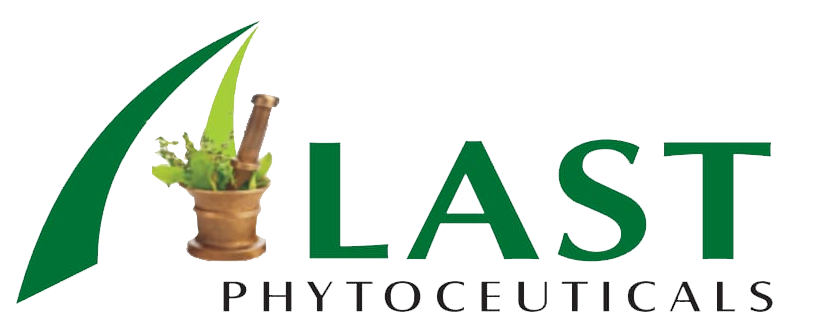- Your cart is empty
- Continue shopping
Alternative medicine has gained immense popularity as individuals seek natural ways to improve their health and well-being. While therapies like herbal remedies, acupuncture, and homoeopathy offer promising benefits, they are not without risks. Understanding the potential side effects of alternative medicine is crucial to ensuring safe usage and informed decisions.
In this article, we explore the side effects of alternative medicine, backed by research and practical insights to help you navigate its complexities responsibly.
Understanding Alternative Medicine
Alternative medicine encompasses a range of therapies and treatments that differ from conventional medical practices. These include:
- Herbal Remedies: using plant-based substances for healing.
- Acupuncture: A traditional Chinese technique involving needles to stimulate specific points on the body.
- Homoeopathy: A system based on the principle of “like cures like.”
- Chiropractic care: focused on musculoskeletal alignment.
- Aromatherapy: The use of essential oils for therapeutic purposes.
While many people turn to these methods for their holistic and non-invasive approach, it’s essential to recognise the potential drawbacks.
Common Side Effects of Alternative Medicine
1. Allergic reactions
- Description: Many alternative treatments, especially herbal remedies, contain active compounds that can trigger allergies in sensitive individuals.
- Examples:
- Skin rashes or itching from herbal creams.
- Respiratory issues from essential oils like eucalyptus or lavender.
- Prevention: Conduct a patch test or consult a healthcare provider before using new products.
2. Herb-drug interactions
- Description: Herbal medicines can interact negatively with prescription drugs, altering their effectiveness or causing harmful side effects.
- Examples:
- St. John’s Wort: Reduces the efficacy of antidepressants, birth control pills, and anticoagulants.
- Ginkgo Biloba: Increases the risk of bleeding when combined with blood thinners.
- Prevention: Always disclose your herbal supplement usage to your doctor.
3. Contamination and Quality Issues
- Description: Unregulated alternative medicine products may contain contaminants, heavy metals, or inaccurate ingredient labels.
- Examples:
- Ayurvedic medicines with traces of lead or mercury.
- Adulteration of herbal capsules with synthetic drugs.
- Prevention: Purchase products from reputable brands and verify certifications like GMP (Good Manufacturing Practices).
4. Overdose and toxicity
- Description: Contrary to popular belief, natural remedies can be harmful when consumed in excessive amounts.
- Examples:
- Kava: Linked to liver damage when taken in high doses.
- Liquorice Root: Can cause hypertension and potassium imbalance.
- Prevention: Stick to recommended dosages and consult an expert when in doubt.
5. Delayed Diagnosis and Treatment
- Description: Relying solely on alternative therapies may delay the diagnosis and effective treatment of serious conditions.
- Examples:
- Using homoeopathy for cancer instead of seeking conventional care.
- Treating severe infections with herbal teas instead of antibiotics.
- Prevention: Combine alternative therapies with conventional medicine under professional guidance.
6. Psychological Dependence
- Description: Some individuals may develop an over-reliance on alternative treatments, neglecting lifestyle changes or medical advice.
- Examples:
- Excessive dependence on detox teas for weight loss.
- Using crystals or energy healing as a substitute for evidence-based therapies.
- Prevention: Maintain a balanced approach to health and wellness.
7. Physical Side Effects from Techniques
- Description: Non-drug therapies like acupuncture or chiropractic care can sometimes cause physical discomfort or injury.
- Examples:
- Bruising or pain at acupuncture needle sites.
- Nerve damage or worsening pain after improper chiropractic adjustments.
- Prevention: Ensure treatments are administered by licensed and experienced practitioners.
8. Misuse of Essential Oils
- Description: Aromatherapy and essential oils can have adverse effects if misused or applied incorrectly.
- Examples:
- Skin burns from undiluted essential oils like tea tree or peppermint.
- Headaches or dizziness from overexposure to strong scents.
- Prevention: Dilute essential oils and use them in well-ventilated spaces.
Who Is at Higher Risk?
Certain groups are more susceptible to the side effects of alternative medicine:
- Pregnant or Breastfeeding Women: Some herbs, like black cohosh or pennyroyal, can cause uterine contractions or harm to the baby.
- Children: Their developing systems may react unpredictably to herbal supplements.
- Elderly Individuals: They are more prone to drug interactions and toxicity.
- Chronic Illness Patients: Alternative treatments may interfere with ongoing therapies for conditions like diabetes or hypertension.
Tips for Safe Use of Alternative Medicine
- Research Thoroughly: Understand the potential risks and benefits of any therapy.
- Consult a professional: Work with qualified practitioners who have expertise in both alternative and conventional medicine.
- Verify Product Quality: Choose certified and reputable brands to avoid contaminated or adulterated products.
- Monitor Side Effects: Pay attention to any adverse reactions and discontinue use if necessary.
- Avoid self-diagnosis: Seek medical advice for serious conditions before starting alternative treatments.
Scientific Perspective on Alternative Medicine
While many alternative therapies lack rigorous scientific validation, some have shown promising results in clinical studies:
- Acupuncture: Effective for chronic pain and migraine relief.
- Herbal Remedies: Turmeric (curcumin) has anti-inflammatory properties, while echinacea boosts immunity.
- Mind-body Techniques: Practices like yoga and meditation improve mental health and reduce stress.
However, the lack of standardisation and regulation remains a significant concern, highlighting the importance of cautious use.
Balancing Alternative and Conventional Medicine
A complementary approach, known as integrative medicine, combines the best of both worlds. It allows individuals to benefit from alternative therapies while relying on evidence-based conventional treatments for critical health issues.
For example:
- Using chiropractic care for back pain alongside physical therapy.
- Incorporating herbal teas for relaxation while continuing prescribed anxiety medication.
Conclusion
While alternative medicine offers numerous benefits, its side effects and risks cannot be overlooked. From allergic reactions to herb-drug interactions, the potential downsides highlight the importance of informed and cautious use. By researching thoroughly, consulting professionals, and combining therapies responsibly, you can maximise the benefits of alternative medicine while minimising its risks.
Take control of your health wisely—embrace the holistic power of alternative medicine, but always prioritise safety and evidence-based practices. 🌿
